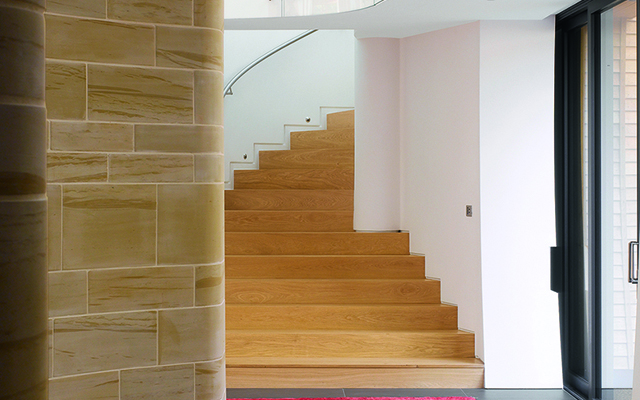Staircases are among the most varied and visually dynamic of all domestic architectural spaces. John Goodall presents a selection of outstanding designs.
Completed in 1828–9, Benjamin Wyatt’s stupendous stair at Lancaster House was based on Le Vau’s lost Escalier des Ambassadeurs at Versailles of 1672–9.
Climbing the treads: a detail of Adam Dant’s playful decoration of the Elizabethan stair at Upton Cresset, Shropshire, painted in 2008–9.
 The 1720s staircase by the architect and surveyor Nicholas Dubois at Chevening, Kent. Dubois’ experience as a military engineer perhaps explains its structural ambition. It was reputedly based on that of Dubois’ London house.
The 1720s staircase by the architect and surveyor Nicholas Dubois at Chevening, Kent. Dubois’ experience as a military engineer perhaps explains its structural ambition. It was reputedly based on that of Dubois’ London house.
 This stair, designed by Birds Portchmouth Russum at Downley, Hampshire, creates a stream of space within the building.
This stair, designed by Birds Portchmouth Russum at Downley, Hampshire, creates a stream of space within the building.
 The Regency staircase hall of Borris, Co Carlow, designed in a Gothic idiom by the Morrisons in about 1812 and painted in stone colours.
The Regency staircase hall of Borris, Co Carlow, designed in a Gothic idiom by the Morrisons in about 1812 and painted in stone colours.
 The stair of Ballywalter, Co Down, was designed in the manner of an Italian palazzo by Charles Lanyon in the 1840s. This idiom was popularised by Charles Barry’s Travellers Club of 1832.
The stair of Ballywalter, Co Down, was designed in the manner of an Italian palazzo by Charles Lanyon in the 1840s. This idiom was popularised by Charles Barry’s Travellers Club of 1832.
 The opulent staircase hall completed before 1906 by Maison Jansen of Paris at Craigengillan, Ayrshire. The sensuous lines of the staircase are inspired by 18th-century French example.
The opulent staircase hall completed before 1906 by Maison Jansen of Paris at Craigengillan, Ayrshire. The sensuous lines of the staircase are inspired by 18th-century French example.
 The compactly designed town-house stair in Portland stone of the Provost’s House of Trinity College Dublin, completed in 1760 by Provost Francis Andrews.
The compactly designed town-house stair in Portland stone of the Provost’s House of Trinity College Dublin, completed in 1760 by Provost Francis Andrews.

6 of the best chandeliers to admire
Sculptural extravaganzas, three-dimensional souvenirs, talking points: chandeliers are so much more than just light fittings.






